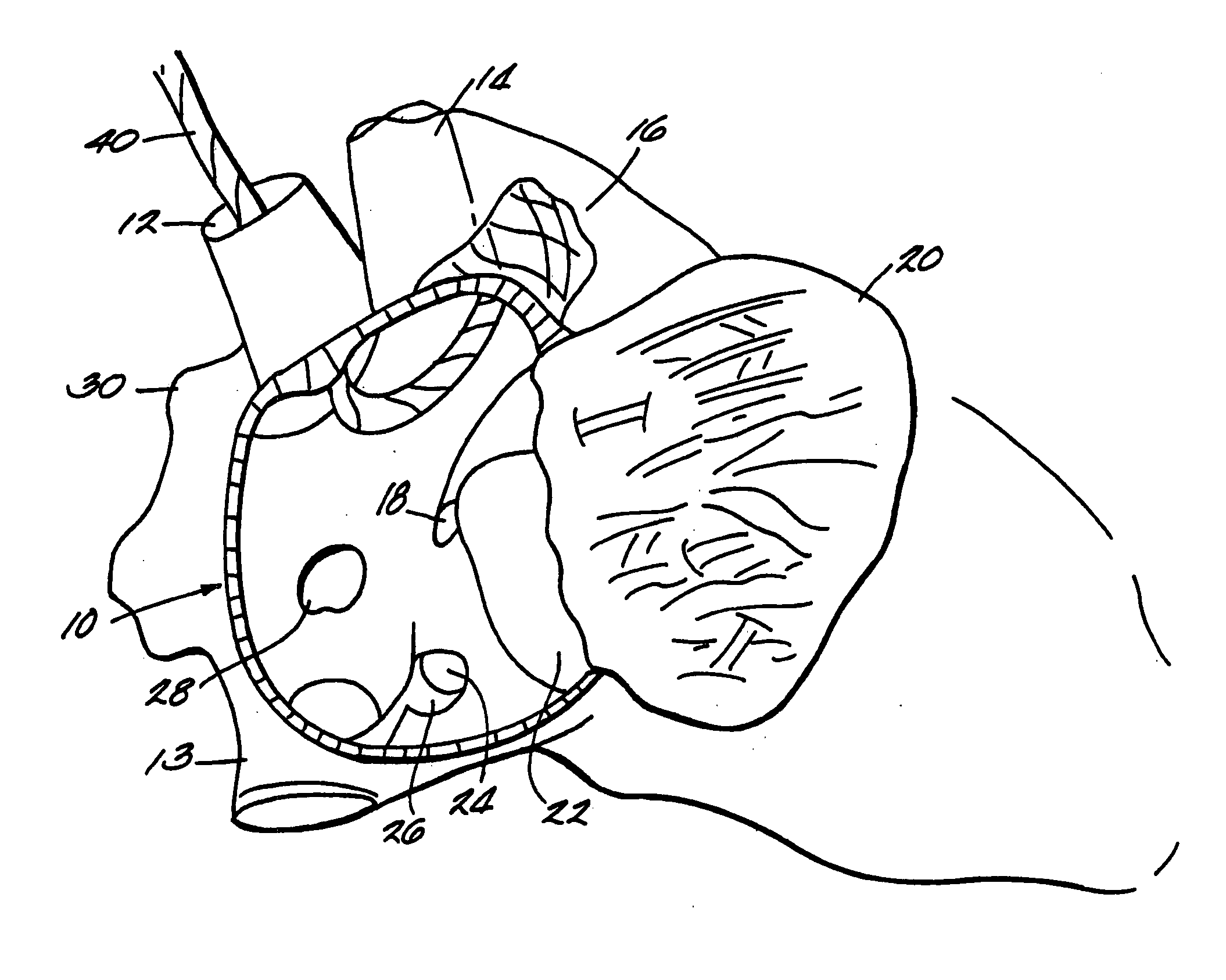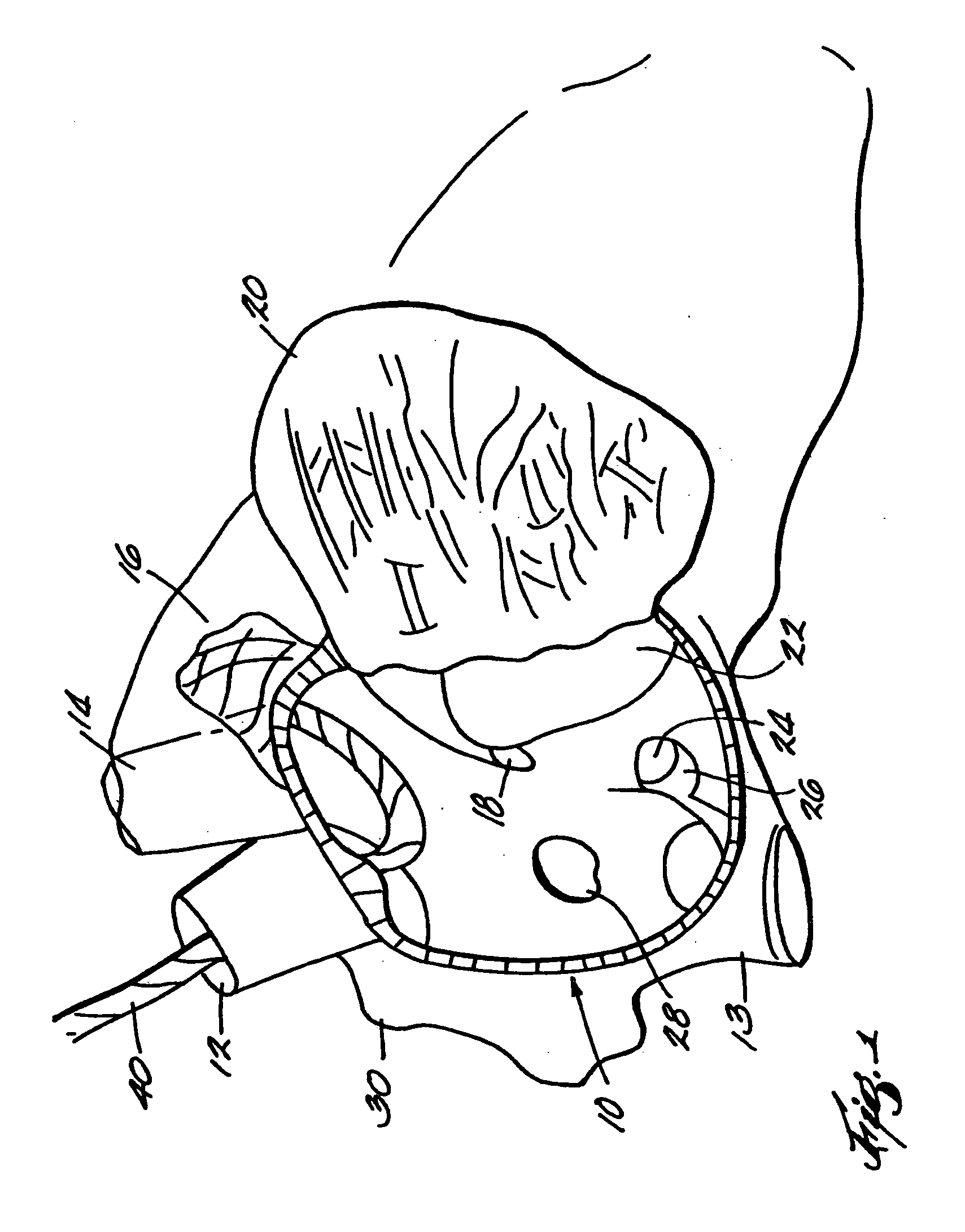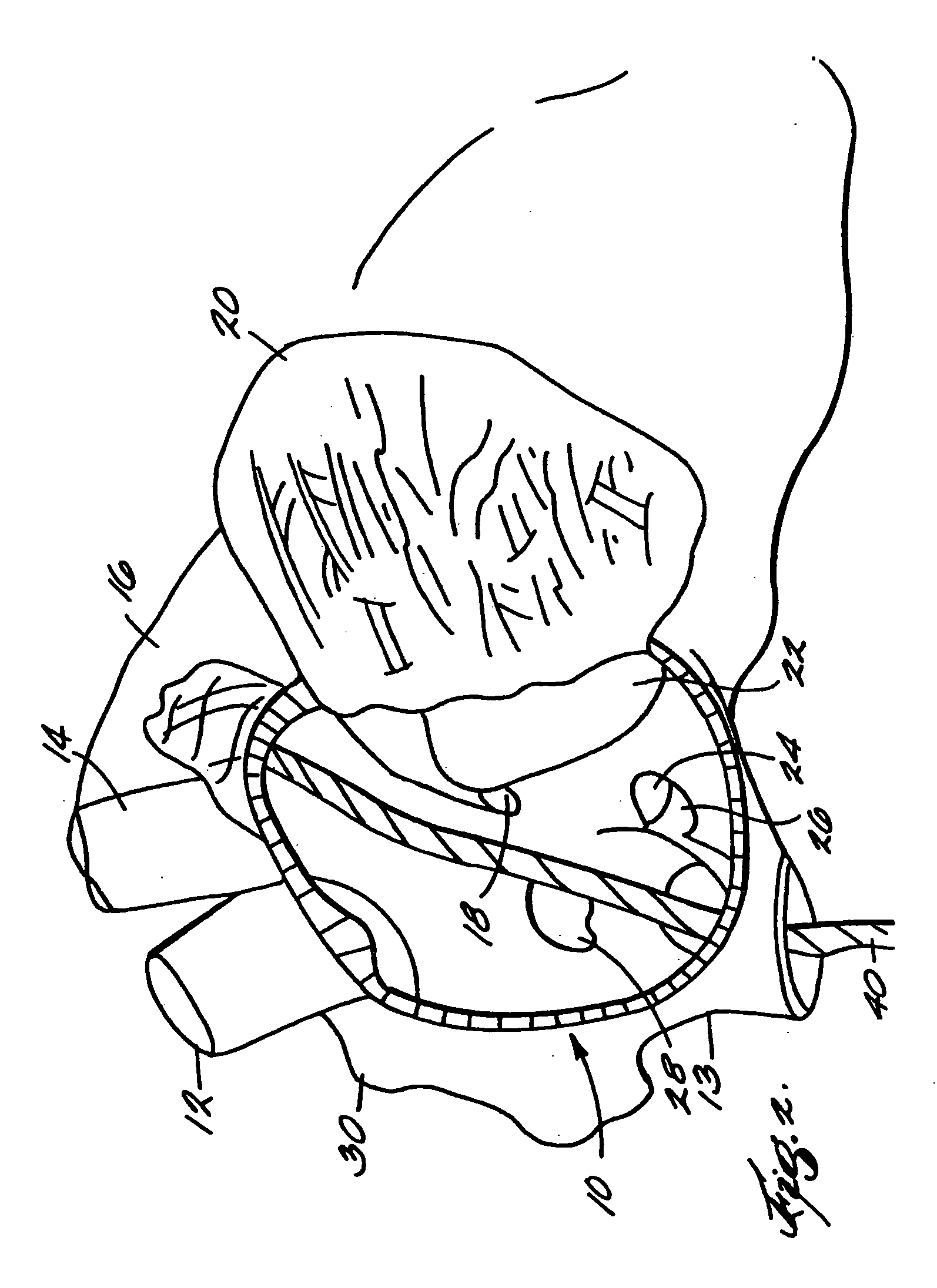Methods for electrically isolating a portion of the atria
a technology of electrical isolation and atria, which is applied in the field of atrial appendages, can solve the problems of enlargement of one or both atria to up to 2-3 times the normal size, inefficient blood transport in certain regions of the atria, and continued blood stasis in certain regions, so as to reduce the size of the region
- Summary
- Abstract
- Description
- Claims
- Application Information
AI Technical Summary
Benefits of technology
Problems solved by technology
Method used
Image
Examples
Embodiment Construction
[0059] Referring more specifically to the drawings, FIGS. 1-3 show, in fragmentary fashion, the right atrium 10, the superior vena cava 12, the inferior vena cava 13, the ascending aorta 14, the right atrial appendage 16, the membranous septum 18, the right atrial freewall 20, the tricuspid valve 22, the opening of the coronary sinus 24, the valve of the coronary sinus 26, and the fossa ovalis 28.
[0060] A left atrium 11 is shown in FIGS. 4-6. There are also seen therein the aortic valve 15, the left atrial appendage 17, the left superior pulmonary vein 19, the mitral valve 21, and the left ventricle 32.
[0061] A catheter 40 is shown generally being introduced into the atria of a heart through various cardiovascular introduction passageways as will be discussed hereinafter. The point of attachment of catheter 40 to the wall of an atrial appendage 16 or 17 is indicated generally at 42.
[0062] Referring to FIGS. 1-6, various ways of entering a heart chamber and positioning a catheter ...
PUM
 Login to View More
Login to View More Abstract
Description
Claims
Application Information
 Login to View More
Login to View More - R&D
- Intellectual Property
- Life Sciences
- Materials
- Tech Scout
- Unparalleled Data Quality
- Higher Quality Content
- 60% Fewer Hallucinations
Browse by: Latest US Patents, China's latest patents, Technical Efficacy Thesaurus, Application Domain, Technology Topic, Popular Technical Reports.
© 2025 PatSnap. All rights reserved.Legal|Privacy policy|Modern Slavery Act Transparency Statement|Sitemap|About US| Contact US: help@patsnap.com



